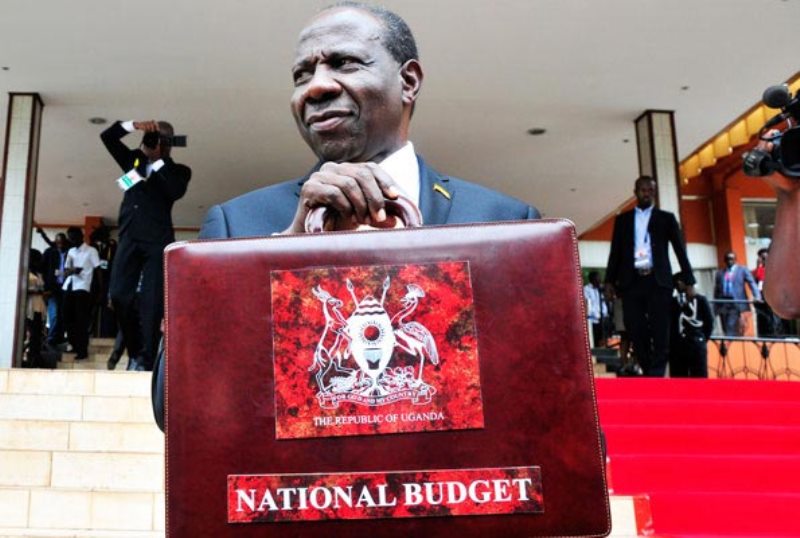The time for Uganda’s budget speech for the Financial Year 2017/18 is fast approaching. According to the Public Finance Management Act, 2015, Members of Parliament are expected to have passed the Budget by May 30 in preparation for the Budget Speech in June.
The budget is read by the Minister of Finance (in this case Matia Kasaija will read it).
According to the final National Budget Framework Paper (NBFP) for 2017/18, Uganda’s budget is expected to increase by 18% to Shs30.2trillion, up from Shs25.6 trillion in 2016/17.
This is a result of increased expenditure on infrastructure, security and interest payments. 2017/18 is the third Fiscal Year of implementation of the Second National Development Plan (NDPII).
Funding for the budget is expected to be generated from domestic resources and external support. Uganda Revenue Authority (URA) is expected to raise Shs14.5 trillion, up from Shs12.6 trillion in 2016/17.
This means that government is likely to introduce new taxes or URA will up its game via collections, a move that would require bringing more people and businesses in the informal sector into the tax net.
While analysts say government borrowing from the domestic market has adversely affected private sector credit growth, the Ugandan government is yet to take heed. In 2017/18, government is expected to raise Shs1.47 trillion from the domestic market through issuance of securities.
This is higher than Shs612 billion in 2016/17 and Shs1.35 trillion that was raised from the market in 2015/16.
In the Framework Paper, government defends increased domestic borrowing saying it’s due to “the need to finance interventions aimed at increasing food production and food security, promotion of value addition and construction of Oil roads and bridges to ensure oil production by FY 2020/21.”
It adds: “We recognize that high levels of domestic borrowing have implications for private sector credit and interest rates hence domestic borrowing is projected to decline to Shs.843 billion in FY 2018/19 and decline further to Shs.485 billion by FY 2020/21. Therefore, Government’s strategy is to scale down new domestic borrowing over the medium term in order to support the private sector.”
Debt Repayments & Interest Payments
Amortization of external debt is projected at Shs916 billion in FY2017/18. The level of external debt repayment is projected to rise to US$ 168 million during FY2018/19, on account of the repayment for the PTA loan.
Government’s interest payments are projected at Shs2.73 trillion in 2017/18, of which Shs2.01 trillion is interest on domestic securities (Treasury bills and bonds) and the rest is interest on external debt.
This overall figure represents an increase of 24.8% as compared to the projected outturn this financial year, and constitutes 9.1% of total resources available for spending.
The figure is projected to rise by 5% the following financial year 2018/19 to Shs2.87 trillion and will amount to Shs3571 billion during in 2021/22.
“The high level of Government expenditure on interest payments, particularly domestic interest payments next year, is a consequence of the high borrowing requirements, necessitated by the need to scale up infrastructure spending,” government says.
Allocations
Shockingly, critical sectors such as health and education received cuts in their allocations. Agriculture and tourism also didn’t receive noticeable increments. The health sector has been allocated Shs1.28 trillion, down from Shs1.82 trillion in 2016/17, representing 5.7% share of the budget (excluding External Debt Repayments, Arrears and Unallocated Taxes & Pension).
Equally, education sector has been allocated Shs2.37 trillion in 2017/18, down from Shs2.44 trillion, representing 10.6% share of the budget. Tourism, trade and industry have also suffered a reduction. They have been allocated Shs100.3bn, down from Shs103.8bn. this represents 0.4% share of the budget. Agriculture, the backbone of Uganda’s economy will receive Shs846.7bn, slightly up from Shs823.4bn.
This represents 3.8% of the budget. Sectors that will benefit from the proposed budget include works and transport, energy and minerals and security. Works and Transport is expected to receive a lion’s share of Shs4.86 trillion, up from Shs3.82 trillion in 2016/17.
This represents 21.7% of the entire budget. Energy and Minerals sector is expected to receive Shs2.99 trillion, up from Shs2.37 trillion the previous financial years, while security will receive Shs1.94 trillion, up from Shs1.57 trillion in 2016/17. This represents 8.6% of the budget.
Economic Growth
Uganda’s economy is projected to grow at 5% in 2016/17, which is slightly lower than targets envisaged under NDPII of 5.7%.
The economy is projected to 5.5% in 2017/18 before accelerating to 6% in2018/19.
“Economic growth will be supported by a recovery in private sector credit due to the easing of monetary policy and ongoing public infrastructure investments. These factors will spur growth in industry (public construction) and services sectors,” government says in the Budget Framework Paper.
“In addition, enhanced productivity growth in agriculture & industry, the projected recovery in global growth in 2018, increased activity in the oil sector following the issuance of oil production licenses and public investments, are all expected to improve the growth prospects,” it adds.






